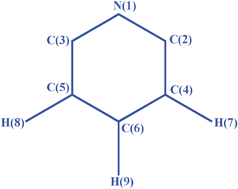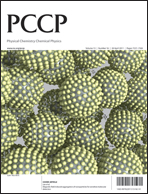Prediction of electronic structure of organic radicaloid anions using efficient, economical multireference gradient approach
Abstract
The improved virtual orbital-complete active space configuration interaction (IVO-CASCI) method enables an economical and reasonably accurate treatment of static correlation in systems with significant multireference character, even when using a moderate basis set. This IVO-CASCI method supplants the computationally more demanding complete active space self-consistent field (CASSCF) method by producing comparable accuracy with diminished computational effort because the IVO-CASCI approach does not require additional iterations beyond an initial SCF calculation, nor does it encounter convergence difficulties or multiple solutions that may be found in CASSCF calculations. Our IVO-CASCI analytical gradient approach is applied to compute the equilibrium geometry for the ground and lowest excited state(s) of the theoretically very challenging 2,6-pyridyne, 1,2,3-tridehydrobenzene and 1,3,5-tridehydrobenzene anionic systems for which experiments are lacking, accurate quantum calculations are almost completely absent, and commonly used calculations based on single reference configurations fail to provide reasonable results. Hence, the computational complexity provides an excellent test for the efficacy of multireference methods. The present work clearly illustrates that the IVO-CASCI analytical gradient method provides a good description of the complicated electronic quasi-degeneracies during the geometry optimization process for the radicaloid anions. The IVO-CASCI treatment produces almost identical geometries as the CASSCF calculations (performed for this study) at a fraction of the computational labor. Adiabatic energy gaps to low lying excited states likewise emerge from the IVO-CASCI and CASSCF methods as very similar. We also provide harmonic vibrational frequencies to demonstrate the stability of the computed geometries.


 Please wait while we load your content...
Please wait while we load your content...